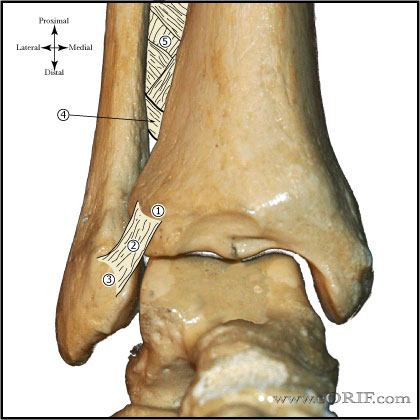Grading Ankle Injuries. Ankle sprains are categorized and treated based on the severity of the ligament injury. Grade 1 sprains involve ligament stretching without obvious tearing. A grade 2 ankle sprain describes a partial ligament tear, and grade 3 sprains involve complete tearing of one or more ankle ligaments. Ankle Ligament Tear Treatment. S93.412D ICD-10-CM Code for Sprain of calcaneofibular ligament of left ankle, initial encounter S93.412A ICD-10 code S93.412A for Sprain of calcaneofibular ligament of left ankle, initial encounter is a medical classification as listed by WHO under the range - Injury, poisoning and certain other consequences of external causes.
There are many different muscles and ligaments in the ankle, which gives the ankle its strength, flexibility, and range of motion.
Major ligaments of the ankle

Anterior and posterior ankle ligaments.
Ligaments are a type of soft tissue that is made up mostly of collagen. Ligaments have low vascularity, which means they do not receive much blood flow. This lack of blood flow makes ligaments slower to heal than other types of soft tissue.
Unlike tendons, which connect muscle to bone, ligaments connect bones to other bones.
There are several major ligaments in the ankle:

- Three ligaments on the outside of the ankle that make up the lateral ligament complex, as follows:
- The anterior talofibular ligament (ATFL), which connects the front of the talus bone to a long bone in the lower leg called the fibula
- The calcaneofibular ligament (CFL), which connects the calcaneus, or heel bone, to the fibula
- The posterior talofibular ligament (PTFL), which connects the rear of the talus bone to the fibula
- The deltoid ligament, a thick ligament which supports the entire medial, or inner, side of the ankle
- The anterior inferior tibiofibular ligament (AITFL), which connects the tibia to the fibula
- Two posterior fibular ligaments, which crisscross the back of the tibia and fibula:
- The posterior inferior tibiofibular ligament (PITFL)
- The transverse ligament
- The interosseous ligament, which rests between the tibia and fibula and runs the entire length of the tibia and fibula, from the ankle to the knee
The various ligaments that surround the ankle together help form part of the joint capsule, a fluid-filled sac that surrounds and lubricates articulating joints.

Major muscles of the ankle
There are also multiple muscles in the ankle that can be strained, as follows:
- The peroneal muscles (peroneus longus and peroneus brevis), on the outside edge of the ankle and foot. These muscles allow the ankle to bend downward and outward.
- The calf muscles (gastrocnemius and soleus), which are connected to the calcaneus via the Achilles tendon. The tightening and relaxing of the calf muscles enables the ankle to bend downward and upward.
- The posterior tibialis muscle, which supports the arch of the foot and enables the foot to turn inward.
- The anterior tibialis muscle, which enables the ankle and foot to turn upward.1
See Common Running Injuries: Foot Pain
See Common Running Injuries: Calf and Shin Pain
Tear Of Calcaneofibular Ligament Icd 10
The complexity of the ankle's muscular and ligament structure creates many possible opportunities for injuries when the ankle is pushed beyond its normal range of motion.
References
Calcaneofibular Ligament Injury Icd 10
- 1.Sechrest, R. Ankle anatomy: a patient's guide. eOrthopod.com: http://www.eorthopod.com/ankle-anatomy/topic/159. Accessed November 17, 2014.